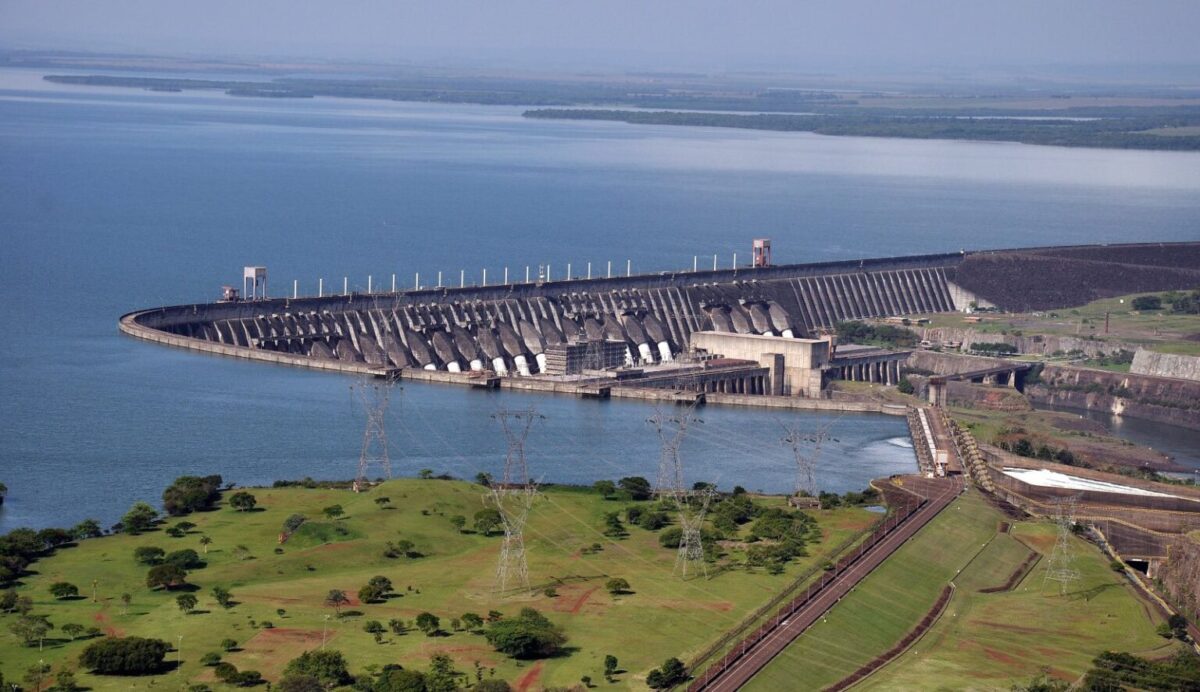From pv magazine LatAm
The Itaipu hydroelectric power plant, also called Itaipu Binacional, is a binational hydroelectric dam located between the cities of Hernandarias in Paraguay and Foz do Iguaçu in Brazil, on the Paraná River, which forms the natural boundary between the two countries, 14 km north of the Friendship Bridge. Last week, the dam's operator issued a call for binational tenders for the provision, installation and commissioning of a 1 MW floating solar system in the plant's reservoir.
The call for Paraguayan and Brazilian companies is open until September 5.
With an estimated budget of $968,000, the initiative seeks to advance the generation of electric energy from solar sources and is undertaken binationally, with the support of the Itaipu Technological Park (PTI) on both banks.
The Paraguayan general director of Itaipu, Justo Zacarías Irún, explained that initially a 10 MW power plant was considered, but finally the executive board authorized the undertaking of a first phase with a capacity of 1 MW.
The designated time period for the installation of the floating solar plant is about four months once the contract is awarded. “If there are no major problems, it is estimated that the floating plant could be installed this year with an experimental phase and then the coupling and verification stage of its SCADA and monitoring systems would begin,” the Renewable Energy Advisory Board of the Entity stated, adding that it could begin operation in the first quarter of next year.
The energy consulting and analysis company PSR recently suggested in a report that “floating solar energy in Brazil is an opportunity for hydroelectric plants.” Specifically, the Itaipu hydroelectric plant, which began operating in 1984, could almost double its generation capacity by installing a floating solar plant on 10% of the surface of its reservoir, which has an area of 1,350 km2, PSR estimates. A floating system in this proportion would have a capacity of 13,500 MW; the hydroelectric plant has 14,000 MW of installed capacity.
The estimate assumes 1.4 MWp of direct current power from floating solar panels for each hectare of occupied surface, or 1 MW of alternating current per hectare, after transformation by means of inverters.
This content is protected by copyright and may not be reused. If you want to cooperate with us and would like to reuse some of our content, please contact: editors@pv-magazine.com.



By submitting this form you agree to pv magazine using your data for the purposes of publishing your comment.
Your personal data will only be disclosed or otherwise transmitted to third parties for the purposes of spam filtering or if this is necessary for technical maintenance of the website. Any other transfer to third parties will not take place unless this is justified on the basis of applicable data protection regulations or if pv magazine is legally obliged to do so.
You may revoke this consent at any time with effect for the future, in which case your personal data will be deleted immediately. Otherwise, your data will be deleted if pv magazine has processed your request or the purpose of data storage is fulfilled.
Further information on data privacy can be found in our Data Protection Policy.